
The Coupe d'Aviation Maritime Jacques Schneider, also known as the Schneider Trophy, Schneider Prize or Schneider Cup is a trophy that was awarded annually to the winner of a race for seaplanes and flying boats. The Schneider Trophy is now held at the Science Museum, South Kensington, London.

The Fairey Aviation Company Fairey III was a family of British reconnaissance biplanes that enjoyed a very long production and service history in both landplane and seaplane variants. First flying on 14 September 1917, examples were still in use during the Second World War.

The Supermarine Seagull was a amphibian biplane flying boat designed and produced by the British aircraft manufacturer Supermarine. It was developed from the experimental Supermarine Seal II.

The Supermarine S.6 is a 1920s British single-engined single-seat racing seaplane built by Supermarine. The S.6 continued the line of Supermarine seaplane racers that were designed for Schneider Trophy contests of the late 1920 and 1930s.

The Supermarine S.4 was a 1920s British single-engined single-seat monoplane racing seaplane built by Supermarine to compete in the 1925 Schneider Trophy. It crashed and was destroyed before the competition started.

The Supermarine S.5 was a 1920s British single-engined single-seat racing seaplane built by Supermarine. Designed specifically for the Schneider Trophy competition, the S.5 was the progenitor of a line of racing aircraft that ultimately led to the Supermarine Spitfire.
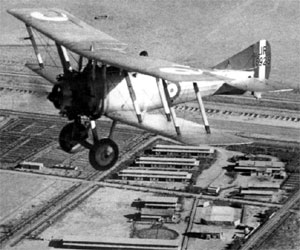
The Nieuport Nighthawk was a British fighter aircraft developed by the Nieuport & General Aircraft company for the Royal Air Force towards the end of the First World War. Although ordered into production before the aircraft first flew, it did not enter large scale service with the RAF owing to unreliable engines. Re-engined aircraft did see service in Greece, serving from 1923 to 1938.

The Supermarine Sea Lion II was a British racing flying boat built by the Supermarine Aviation Works. Designed by Reginald Mitchell, it was a modification of Supermarine's Sea King II. Sea Lion II was powered by a 450 hp (340 kW) Napier Lion engine.
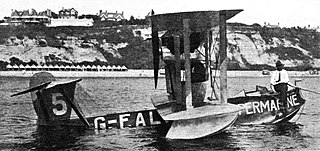
The Supermarine Sea Lion I was a British racing flying boat designed and built by Supermarine for the Schneider Trophy contest at Bournemouth, England, in September 1919. It was based on a version of the Supermarine Baby, the first single-seat flying boat fighter aircraft to be designed and built in the United Kingdom, that first flew in February 1918.

The Gloster VI was a racing seaplane developed as a contestant for the 1929 Schneider Trophy by the Gloster Aircraft Company.

The Short Crusader also called the Short-Bristow Crusader and Short-Bristol Crusader was a British racing seaplane of the 1920s, built by Short Brothers to compete in the 1927 Schneider Trophy race.
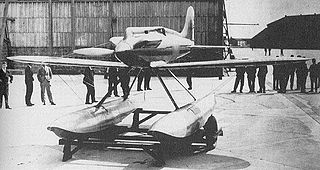
The RAF High Speed Flight, sometimes known as 'The Flight' , was a small flight of the Royal Air Force (RAF) formed for the purpose of competing in the Schneider Trophy contest for racing seaplanes during the 1920s. The Flight was together only until the Trophy was won outright, after which it was disbanded.

The Gloster III was a British racing floatplane of the 1920s intended to compete for the Schneider Trophy air race. A single-engined, single-seat biplane, two were built, with one finishing second in the 1925 race.

The Macchi M.52 was an Italian racing seaplane designed and built by Macchi for the 1927 Schneider Trophy race. The M.52 and a later variant, the M.52bis or M.52R, both set world speed records for seaplanes.
The Gloster II was a British racing floatplane of the 1920s. A single-engined biplane, two were built to compete in the 1924 Schneider Trophy air race. However the crash of the first prototype during testing meant that it could not be made ready for the race, which was postponed. The second aircraft was also lost in a crash.

The Gloster Gorcock was a single-engined single-seat biplane fighter aircraft produced to a United Kingdom Air Ministry contract completed in 1927. Only three were built.

The Gloster Guan was a single-engined single-seat experimental biplane fighter built in the United Kingdom to test the performance of fighters using supercharged engines at high altitudes. Three were planned but only two constructed.
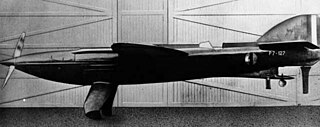
The Piaggio P.7, also known as the Piaggio-Pegna P.c.7, was an Italian racing seaplane designed and built by Piaggio for the 1929 Schneider Trophy race.

The Macchi M.33 was an Italian racing flying boat which competed in the 1925 Schneider Trophy race.
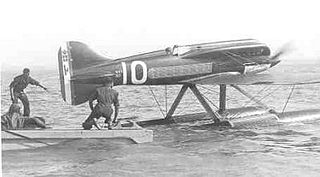
The Macchi M.67, was an Italian racing seaplane designed by Mario Castoldi and built by Macchi for the 1929 Schneider Trophy race.




















